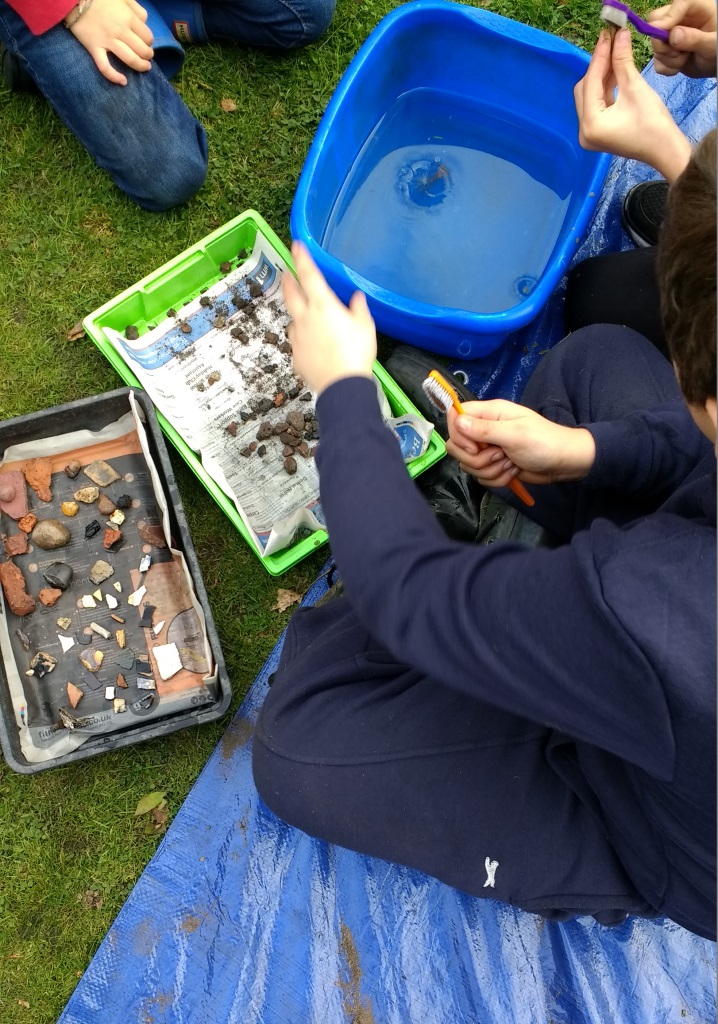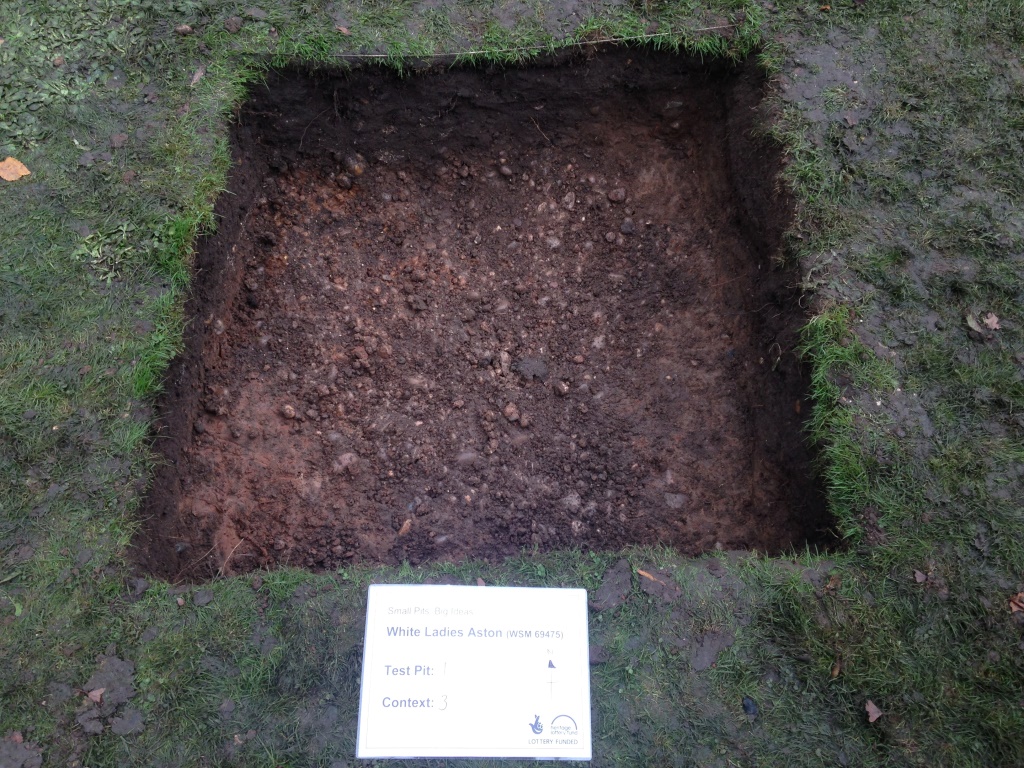Digging Small Pits, Big Ideas – day 2
- 16th November 2017
After promising finds during Day 1 of this HLF funded project, the four teams were eager to get going on the second morning and dig the deepest test pit. Spits 2 and 3 were soon excavated and the soil sieved for finds – several of the eagle-eyed amongst the group were particularly good at spotting the smallest of finds and those pottery sherds masquerading as stones.
Toothbrushes may seem unlike archaeological tools, but their cleaning actions are effective on more than just teeth. Finds need to be clean in order to properly see what they are. So, armed with toothbrushes and a bowl of water, the teams began releasing their finds from the sandy soil that clung to them.

Washing finds at Test Pit 4
Just before lunchtime, the soil in Test Pit 1 dramatically changed at a depth of c.30cm from a dark loamy soil to pinky orange gravel. The gravel layer is natural geology and therefore the bottom of Test Pit 1. As the deposit was laid down before modern humans lived in Worcestershire (if you go into deep prehistory and other human species that’s a whole different matter), so there is no point digging through a geological layer that will not contact any evidence of human activity. What this all meant for Test Pit 1 is that the team had excavated all existing archaeological deposits and could dig no more.

Natural geology encountered in Test Pit 1
Time was running out for the other three test pits too. Archaeology is not solely about digging though and the all important final records needed completing. As well as soil descriptions, the sides (sections) of each test pit were drawn, to show how deep they were and if different archaeological layers had been excavated (such as topsoil and subsoil).
Once final photos were taken, back filling of the test pits began. As the excavated soil had become well aerated, it needed compacting down every so often – jumping on the spot is the best way to achieve this, as demonstrated below! Thanks to the care taken when we started, all neatly laid out turf squares went back in the same places to snugly cover over the holes.

Backfilling Test Pit 1
Fieldwork over, our hardworking participants headed home for a well-deserved rest before exploring their finds at The Hive on Day 3 – read more in our next blog.
Post a Comment